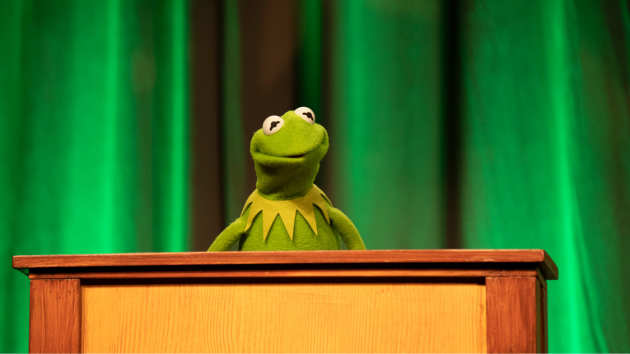Trump's Air Traffic Control Plan: Newark Airport's Recent Issues Explained

Table of Contents
Understanding Trump's Air Traffic Control Privatization Plan
Trump's Air Traffic Control privatization plan aimed to significantly overhaul the nation's air traffic management system. The core tenet was to transfer control of the system from the Federal Aviation Administration (FAA) to a non-profit, independent entity. This shift was intended to bring several benefits:
- Increased Efficiency: Proponents argued that a privatized system would be more agile and responsive to the demands of a growing air travel industry, leading to fewer delays.
- Modernization of Infrastructure: The plan emphasized significant investment in modernizing outdated infrastructure, including upgrading radar systems and air traffic control towers.
- Improved Technology: The introduction of NextGen technology, a system designed to improve air traffic flow and reduce delays through more precise navigation, was a key component.
However, the plan also faced significant criticism:
-
Cost Concerns: Questions were raised about the potential for increased costs, particularly during the transition phase.
-
Reduced Oversight: Critics worried about the potential for decreased government oversight, raising concerns about safety and fairness.
-
Impact on Safety Regulations: Concerns existed about the potential for deregulation to compromise safety standards.
-
Shift from Government Control: The plan represented a radical departure from the traditional government-run model.
-
Technological Advancements: NextGen technology was central to the plan’s promise of improved efficiency.
-
Controversies and Criticisms: The proposal sparked considerable debate within Congress and among aviation stakeholders.
Newark Airport's Specific Challenges
Newark Airport has faced numerous air traffic control problems recently, resulting in widespread delays and passenger inconvenience. Several factors contributed to this situation:
-
Increased Air Traffic Volume: EWR serves as a major hub, leading to a consistently high volume of flights, exceeding the airport's current capacity.
-
Aging Infrastructure: Some of EWR's infrastructure is outdated, hindering efficient air traffic flow.
-
Weather-Related Delays: Severe weather events frequently impact flight operations, causing cascading delays.
-
Staff Shortages: Shortages of air traffic controllers and ground crew personnel can exacerbate delays.
-
Specific Examples: Numerous news reports documented significant delays and cancellations at EWR in recent years.
-
Quantifiable Impact: Thousands of flights have been affected, resulting in massive passenger disruptions and economic losses.
-
Supporting Evidence: News articles and FAA reports confirm the challenges faced by Newark Airport.
The Interplay Between Trump's Plan and Newark's Problems
The relationship between Trump's Air Traffic Control plan and Newark's struggles is complex. While the plan aimed to improve air traffic management nationwide, its impact on EWR's specific challenges is debatable:
- Technological Upgrades: NextGen technologies, central to the plan, could have mitigated some of EWR's issues, but their full implementation was not guaranteed.
- Privatization's Impact: Whether privatization would have truly improved efficiency at EWR remains unclear; the plan didn't specifically address EWR's unique infrastructural problems.
- Overlooked Needs: Critics argued that the plan's broader focus may have overlooked the specific needs of individual airports like EWR.
Alternative Solutions and Future Outlook for Newark Airport
Addressing Newark Airport's air traffic management challenges requires a multifaceted approach independent of Trump's plan:
-
Infrastructure Investment: Significant investments are needed to upgrade and expand EWR's infrastructure, including runway expansion and modernizing air traffic control towers.
-
Technological Upgrades: Implementing advanced technologies, such as next-generation radar systems and improved flight planning software, is crucial for better efficiency.
-
Optimized Scheduling: Collaborative efforts between airlines and air traffic controllers to optimize flight schedules and reduce congestion are vital.
-
Specific Infrastructure Improvements: Investing in new runways, taxiways, and gates can significantly improve throughput.
-
Technological Solutions: Modern radar systems and data analytics can significantly improve real-time decision-making.
-
Collaboration: Improved communication and coordination between airlines and air traffic controllers can streamline operations.
Conclusion
Newark Airport's recent air traffic woes highlight the complex interplay between infrastructure limitations, air traffic volume, and broader national air traffic management strategies. While Trump's Air Traffic Control plan aimed to improve efficiency, its impact on EWR's specific challenges remains uncertain. The plan's potential benefits like modernization and technological upgrades may have addressed some systemic problems, but its implementation was incomplete, and it didn't directly tackle the unique infrastructural constraints faced by EWR. Addressing these challenges requires a comprehensive strategy focused on infrastructure improvements, technological advancements, and enhanced collaboration.
To ensure a smoother and more efficient air travel experience at Newark and other major airports, staying informed about air traffic control policy developments is crucial. We need active engagement with government agencies and advocacy groups to continue advocating for improvements to air traffic management systems and holding decision-makers accountable for the effective implementation of plans, including evaluating the legacy of Trump's Air Traffic Control Plan and its lasting impact on air travel in the United States.

Featured Posts
-
 Waiting By The Phone A Personal Account Of My Experience
May 24, 2025
Waiting By The Phone A Personal Account Of My Experience
May 24, 2025 -
 Umds 2025 Commencement Speaker Kermit The Frog Internet Reactions
May 24, 2025
Umds 2025 Commencement Speaker Kermit The Frog Internet Reactions
May 24, 2025 -
 Elena Rybakina Tretiy Krug Na Turnire Wta 1000 V Rime
May 24, 2025
Elena Rybakina Tretiy Krug Na Turnire Wta 1000 V Rime
May 24, 2025 -
 Guccis New Designer Demna Gvasalias Vision And Style
May 24, 2025
Guccis New Designer Demna Gvasalias Vision And Style
May 24, 2025 -
 Space Crystals And The Future Of Drug Development
May 24, 2025
Space Crystals And The Future Of Drug Development
May 24, 2025
